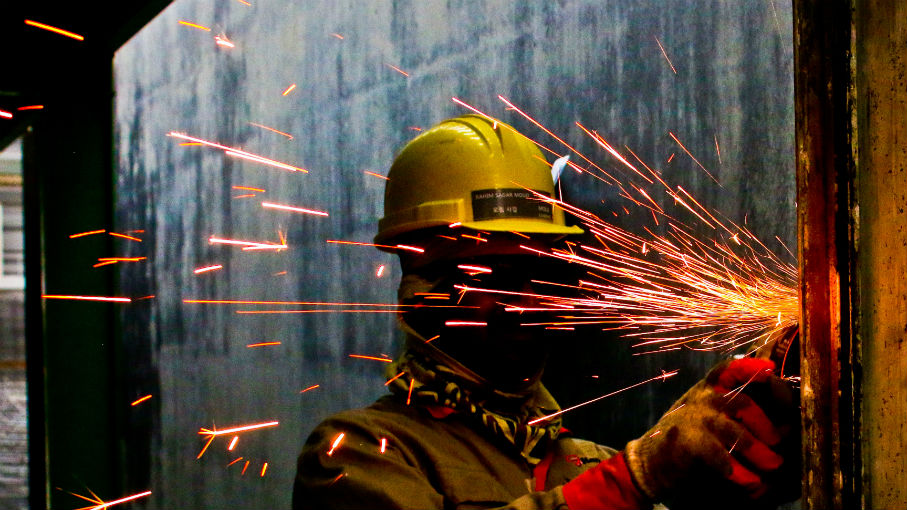Intrinsically Safe Isolators are the most flexible and effective means of implementing Intrinsic Safety into Hazardous Area applications. They provide power limitations for an intrinsically safe circuit by limiting the amount of electrical energy in it to levels where they cannot cause a spark or ark that would ignite any explosive atmosphere eventually present. To be effective, the isolator must not be designed as a stand-alone apparatus, but rather it has to be considered one of the component of the IS circuit as a whole, in which the total energy has to be calculated. The achievement of the required limitation must be certain and demonstrated. The total energy of the IS circuit has to be kept below ignition levels of the explosive atmosphere in the Hazardous Area.
This property of the isolator has to be certified through a third party assessment. The quickest way to reach Europe and most of the world outside North America is to demonstrate compliance to IEC 60079 series standards, which provide the directions in case of risks of explosion, including the definitions of “Explosive Atmosphere”, “Hazardous Area” and the classification of the areas in zones. According to the standard, “an Explosive Atmosphere is a mixture made of air, under atmospheric conditions, of flammable substances in the form of gas, vapour, dust, fibers or flyings which, after ignition, permits self-sustaining propagation”. Consequently, “a Hazardous Area (gas) is an area in which an explosive gas atmosphere is (or may be) expected to be present, in quantities such as to require special precautions for the construction, installation and use of equipment”. In regards to the areas classification (according to IEC 60079), Hazardous Areas are classified in Zones - where the attribution of the Zone is based on the general nature (or properties) of the hazardous material (that is to say if it’s gas or dust) and the probability of it being present in the surrounding atmosphere - and in Groups (indirectly depending on the level of danger of the hazardous material).
Barriers (devices with similar scopes as isolators but different from them as not being galvanically isolating devices) require secure connections to a dedicated IS earth point, while isolators operate earth-free whilst being more tolerant in supply voltage. IS Isolators are normally located in safe area, but, if properly designed and certified, they can also be installed in Zone 2 area even closer to the field device.
There are several and different applications of IS Isolators. Among them:
- Analog Input;
- Analog Output;
- Digital Input;
- Digital Output;
- Signal Converter;
- Trip Amplifier;
- Serial Line Converter;
- Load Cell Isolator Converter;
- Vibration Transducer;
- Frequency input Converter;
- Temperature Input Converter;
- Flammable Liquid Presence Detector;
- Smoke Detector.
All of them require different and complex electronics as, for example, isolating devices which provide isolation and transfer a 4-20 mA signal from a controller located in the safe area to a load in the hazardous area, with circuits allowing bidirectional communication. Specific fault signals to the control device circuit can complete the desired application, providing monitor and diagnostic features which can be controlled remotely. DIP-Switch programming can increase the application range of the isolator, ensuring the widest universality of a single module, and customized termination boards can help the end-user to save cabling time and material.
Taken from granted that the main task of the isolator is to allow connection between safe area and hazardous area, additional operating features can be:
- Wide range of input / output signals;
- Source/Sink Current signal towards PLC/DCS;
- Digital bus communication (e.g. Modbus);
- Burnout fault detection;
- High Accuracy;
- Multiple isolation;
- Programmability of some operating parameters;
- Easy installation, using standard DIN-Rail and plug-in terminal blocks, or customized Termination Boards.
To summarize, IS isolators have several applications differing in terms of features and technology. All of them have specific elements in common: their scopes, how they work and their capacity of limiting the energy present in IS circuits, consequently avoiding risks of explosion in Hazardous Areas, as defined in applicable and regulating standards. In all applications, where safety has to be achieved, they represent a fundamental component of IS, allowing your Company and you to effectively face the challenges in terms of social responsibility towards workers and environment, while protecting the value of the industrial investments in production and processing equipment.


